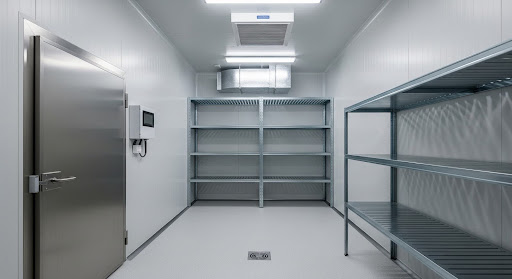Walk into any successful restaurant, and you see the dining area, the menu, the plating. What remains hidden is the operational backbone ensuring every ingredient is safe, fresh, and consistent: the commercial cold room. This isn’t merely a large refrigerator; it’s a climate-controlled vault that protects inventory, maximizes shelf life, and safeguards public health. For any food-based enterprise, a reliable cold storage system isn’t an optional luxury, it’s the absolute foundation upon which quality, safety, and profitability are built.
More Than Just a Big Fridge
Understanding the distinction between a standard reach-in fridge and a walk-in cold room is crucial. The latter acts as a centralized storage hub, designed for bulk quantities and diverse product types. Its capacity allows for efficient organization, reducing clutter in smaller kitchen units. More importantly, it maintains a precise, stable temperature far more effectively than multiple standalone units, which often cycle temperatures as doors open and close. This stability is non-negotiable for preserving delicate proteins, fresh produce, and dairy products at their peak.
The Critical Role of Consistent Upkeep
Purchasing a high-quality cold room is only the first step. Its performance and longevity depend entirely on disciplined, proactive care. A rigorous schedule for cold room maintenance is the single greatest factor in preventing catastrophic failure. This involves regular professional servicing of compressors and condensers, diligent cleaning of coils to ensure efficient airflow, and frequently inspecting door seals for any leaks. Neglecting these steps invites temperature fluctuations, skyrocketing energy bills, and ultimately, inventory loss that can cripple operations.
Protecting Your Bottom Line
Food waste directly attacks profitability. A single refrigeration breakdown can spoil thousands of dollars in inventory within hours. A properly functioning cold room dramatically reduces this risk, protecting your significant investment in ingredients. Furthermore, buying in bulk from suppliers is often far more economical. Without ample, reliable cold storage, a business cannot leverage these volume discounts. This storage capacity translates into fewer deliveries, saving on freight costs and reducing the carbon footprint of your supply chain.
Menu Diversity and Operational Flow
The scope of your culinary offerings is directly linked to your storage capabilities. A limited refrigeration space forces a simplified menu reliant on non-perishable or frequently delivered items. A spacious, well-organized cold room empowers creativity. It allows chefs to source seasonal specialties, age meats properly, prepare large-batch components in advance, and manage inventory for catering events. This operational flexibility is a significant competitive advantage, enabling a dynamic menu that can adapt and impress.
Safety and Regulatory Compliance
In the food industry, safety is the highest priority. Health codes mandate strict temperature controls for specific food categories to prevent the growth of pathogenic bacteria. A cold room provides a documented, stable environment that simplifies compliance during health inspections. Digital monitoring systems can provide logs and alerts, offering proof that hazardous foods like meat, poultry, and fish have been stored at safe temperatures continuously, protecting both customers and the business from liability.
Planning for Your Business Scale
Selecting a cold room isn’t a one-size-fits-all decision. A new café has vastly different needs than an established hotel banquet kitchen. Consider not only your current volume but also projected growth. Is there space for expansion? Factor in your menu’s complexity, do you need multiple zones for different temperatures (e.g., a chilled room for produce and a deeper freeze for ice cream or frozen goods)? Investing in a scalable solution from the outset prevents costly upgrades down the line.
An Investment in Reputation
Ultimately, a reliable cold storage system is an investment in your brand’s integrity. It guarantees that the high-quality ingredients you pay for reach the customer’s plate as intended. It ensures consistency, so a dish tastes the same on a busy Saturday as it does on a quiet Tuesday. By eliminating the variable of spoilage and inconsistency, you build a reputation for reliability and quality that keeps guests returning. In the restaurant business, that trust is the most valuable currency of all.












